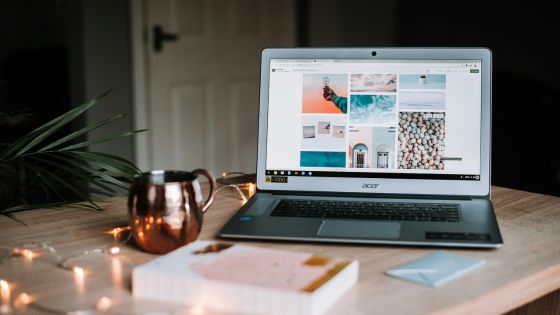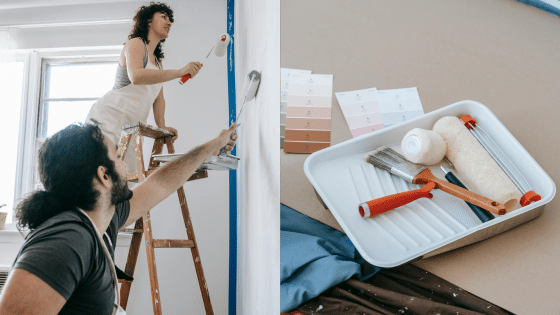Interior design is more than furniture placement and color palettes. It’s about creating a feeling, a sense of peace, inspiration, or focus, depending on the space’s purpose. Wall art prints, often an afterthought in home or office design, play a surprisingly powerful role in shaping how a room makes people feel. From sparking creativity to evoking calm, visual elements directly influence emotional response, behavior, and energy.
Understanding the psychological effects of wall art can help you select pieces that enhance your space’s function and support your well-being. Whether you’re decorating a cozy living room, a busy workspace, or a minimalist hallway, the prints you choose can transform the entire atmosphere.

Selecting Themes That Shape Emotional Response
The subject matter of a wall art print determines its initial emotional impression. Landscapes with open skies or flowing water can induce calm and spaciousness, making them perfect for bedrooms or wellness areas. Abstract geometric pieces with bold shapes and symmetry may energize a space, ideal for home offices or collaborative studios. Whether you choose the Printiv Art space series or another visually bold collection, thematic cohesion matters. Celestial themes, for instance, often evoke mystery, expansion, and curiosity, qualities that can bring depth to a meditation corner or creative hub. Animal prints, on the other hand, often convey strength, freedom, or playfulness depending on the species and composition.
The key is to align the mood of the print with the room’s intended use. A vibrant flamingo print in a corporate boardroom may clash emotionally, while it might thrive in a playful guest room or café.
The Influence of Color Psychology in Prints


Color is one of the most significant mood influencers in any form of art. Blue tones tend to be soothing, often linked to trust and serenity. Reds are associated with passion, urgency, and attention, making them powerful but potentially overwhelming if overused. Yellow energizes and encourages optimism, while green brings balance and a sense of nature indoors.
When selecting wall art prints, consider not only the color of the artwork but also how it interacts with existing decor. A calm, monochromatic bedroom benefits from subtle, tonal artwork in shades of beige, blue, or gray. In contrast, a vibrant studio may come to life with high-contrast prints featuring oranges, teals, or magentas.
Framing Choices That Add Impact
Though often overlooked, the frame surrounding your print affects the viewer’s experience of the artwork. Sleek black or white frames convey modernity and precision, while natural wood frames introduce warmth and organic texture. A 12×16 wooden frame offers the same organic warmth but with a balanced scale that works beautifully in both gallery-wall compositions and standalone settings. Metallic frames, like brushed brass or silver, add elegance and sophistication.
Beyond style, scale matters. A small print in a large frame can feel precious and intimate. A large print in a narrow frame may seem bolder and more assertive. You can even layer multiple prints together in a gallery wall to tell a thematic story or to play with scale and movement across a room.
The Spatial Impact of Art Placement
Where you place your prints is just as important as which ones you choose. Hanging art at the correct height (typically eye level for an average adult, or about 57-60 inches from the floor) allows it to integrate naturally into the room’s composition.
Over a couch, bed, or console, the print should align in scale, neither dwarfed by the furniture nor overwhelming. Grouping multiple prints in a linear or grid formation can evoke order, while staggered or organic arrangements create a sense of flow and creativity.
In narrow hallways or stairwells, vertical arrangements of smaller prints can create movement and visual interest. In large open-plan rooms, oversized prints help break up visual monotony and provide focal points that guide the eye.
Supporting Function With Form
Art elevates aesthetic appeal and enhances how a space functions. In a kitchen, a splash of quirky artwork can turn a utilitarian space into a more enjoyable experience. In a waiting area or lobby, art helps ease tension and fills awkward silences. In children’s rooms, playful prints can aid development and comfort.


Think of art as a silent assistant to the room’s purpose. In a yoga room, calming mandalas or forest prints set a peaceful tone. In a brainstorming room, kinetic abstracts or colorful maps can stimulate discussion and ideation.
Function and emotion intersect in how people move through a space. The right art subtly shapes both.
Personal Connection and Evolving Tastes
Wall art prints should resonate with you personally. Whether it’s a favorite city skyline, a symbolic animal, or a quote layered into a design, the emotional resonance deepens when there’s personal meaning behind the imagery. Art doesn’t need to be expensive or famous; it needs to reflect your identity and enhance your space.
Tastes change, and that’s okay. Rotating seasonal art, switching frames, or rearranging a gallery wall keeps your interior feeling fresh and responsive. Your mood shifts, and so can your art.

Wall art prints are more than decoration. They serve as emotional anchors, visual storytelling devices, and powerful tools for shaping ambiance. When chosen with thought and intention, they become extensions of the environment, and by extension, of the people who live, work, or rest within it. Whether dramatic or understated, contemporary or classic, the right print can elevate a space into an experience.
- 3shares
- Facebook0
- Pinterest0
- Twitter3
- Reddit0













